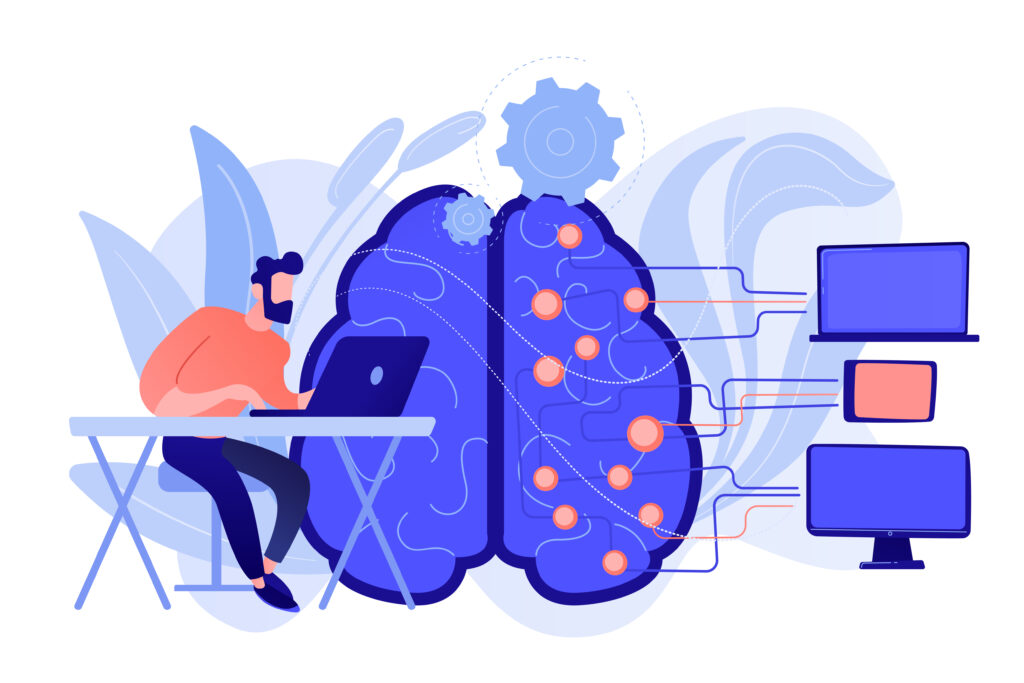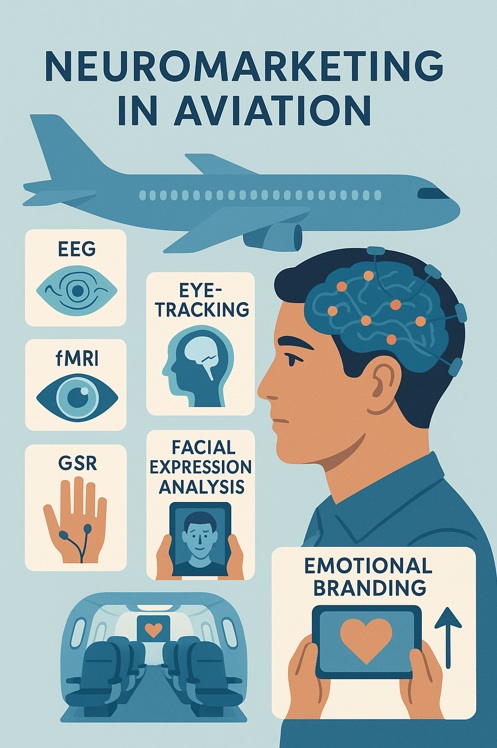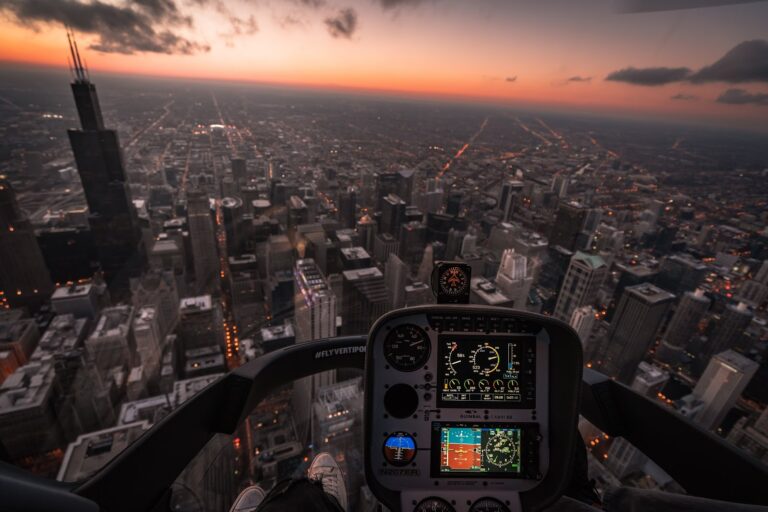Neuromarketing in Aviation: Harnessing Brain Science for Enhanced Passenger Experience
In today’s hyper-competitive aviation industry, the answers lie not just in what passengers say, but in what their brains reveal. This is where neuromarketing steps in a cutting-edge approach that uncovers the hidden drivers of behavior by examining the subconscious aspects of thought. Neuromarketing, an interdisciplinary field combining neuroscience, cognitive psychology, and behavioral economics, offers insights into the subconscious processes underlying consumer decisions. Through neurophysiological measurements and behavioral analytics, aviation stakeholders can improve customer experience, brand perception, and operational design. By tapping into brain activity, emotional signals, and physiological responses, airlines and airports can go beyond traditional market research. They can design experiences that feel right, even before passengers can explain why. From reshaping loyalty programs to optimizing in-flight lighting and cabin ambiance, neuromarketing provides tools to reimagine aviation through the lens of emotion, perception, and human instinct. In this article, we explore how neuromarketing is being applied across the aviation value chain and how it’s quietly revolutionizing the way we fly.

Understanding Neuromarketing
At its core, neuromarketing is about understanding what consumers feel, even when they can’t put those feelings into words.Unlike traditional surveys or focus groups that rely on conscious responses, neuromarketing digs deeper. It uses neuroscience tools to measure real-time brain activity, emotional arousal, and subconscious reactions. This allows companies to tap into the hidden layer of decision-making.
Here are some of the main tools used in neuromarketing:
- EEG (Electroencephalography): Think of it as a brainwave reader. EEG tracks attention, mental workload, and engagement levels. In aviation, it’s used to evaluate how passengers respond to in-flight entertainment, lighting, or announcements.
- Eye-Tracking: Ever wonder what catches a passenger’s eye first on a booking page or airport sign? Eye-tracking maps visual attention and helps optimize layouts for clarity and impact.
- fMRI (Functional Magnetic Resonance Imaging): This high-tech scan shows which parts of the brain “light up” when someone experiences emotion or makes a decision, like booking a flight or evaluating brand trust.
- GSR (Galvanic Skin Response): Our skin reacts to emotional arousal. GSR tracks those tiny changes to understand how passengers respond to visual cues, stressors, or onboard services.
- Facial Expression Analysis: Even when we try to hide our feelings, our faces reveal micro-emotions. This tool decodes subtle expressions to understand true emotional responses to ads, designs, or service moments.
Together, these tools help aviation professionals design smarter, more emotionally resonant experiences ones that align not only with what passengers say they want, but also with what their brains reveal they truly need.

How Neuromarketing Is Taking Off in Aviation
Neuromarketing isn’t just theory; it’s already being applied across the aviation industry in powerful ways. From cabin design to loyalty programs, here’s how brain science is reshaping the passenger experience:
1. Emotional Branding: Winning Hearts Before Takeoff
Passengers form emotional bonds with airlines long before boarding a flight. Colors, logos, scents, and even ambient sounds all play a role in shaping brand perception.Studies have shown that emotionally charged branding activates brain areas associated with trust and preference. That’s why many airlines are investing in multisensory branding from soothing cabin fragrances to carefully curated boarding music.
2. Smarter In-Flight Comfort: Lighting, Sleep, and Brainwaves
Long flights often bring discomfort, but neuromarketing offers solutions. EEG and heart rate data are now being used to:
- Fine-tune cabin lighting that matches circadian rhythms
- Reduce jet lag and improve sleep quality
- Personalize in-flight entertainment based on engagement metrics
The result? A more relaxed, attentive, and satisfied passenger.
3. Stress-Free Navigation: Airports That Think Like Humans
Airports can be confusing, even for frequent flyers. Eye-tracking studies show that poor signage increases stress and reduces perceived service quality.
By analyzing where passengers look and how they react, designers can:
- Place signage in optimal spots
- Simplify boarding gate layouts
- Reduce confusion during transfers and security checks
Better wayfinding means happier travelers and fewer missed flights.
4. Booking with the Brain: Crafting Frictionless Digital Journeys
Booking a flight can be overwhelming, especially when confronted with flashing prices and countdown timers. Using neuromarketing insights, airlines can redesign interfaces to:
- Minimize decision fatigue
- Highlight pricing information that feels fair
- Create intuitive, emotionally resonant user flows
This leads to higher conversions and less frustration at checkout.
5. Loyalty That Sticks: Tapping Into Habit and Emotion
Traditional loyalty programs often feel transactional. However, when done correctly, they can foster deep emotional connections.
fMRI research shows that surprise rewards and personalized perks activate the brain’s reward center, strengthening habits and long-term brand loyalty. Airlines are now utilizing these insights to reevaluate their frequent flyer programs and customer appreciation strategies.
Toward Emotion-Centered Aviation Design
Neuromarketing integrates empirical neuroscience into the operational and experiential design of aviation. By transitioning from self-report to neurophysiological measurement, aviation companies can create emotionally resonant, user-centered experiences. This scientific approach provides a competitive advantage in an industry increasingly defined by personalization and emotional branding.
From the moment a ticket is booked to the final step off the jet bridge, every interaction can be optimized to reduce stress, build trust, and spark loyalty. As the industry moves toward hyper-personalization and emotional branding, those who understand the brain will win the heart.In the future of aviation, it’s not just about flying, it’s about feeling.
References
Delgado, M. R. (2007). Reward-related responses in the human striatum. Annals of the New York Academy of Sciences, 1104(1), 70-88.
Fisk, A. S., Tam, S. K., Brown, L. A., Vyazovskiy, V. V., Bannerman, D. M., & Peirson, S. N. (2018). Light and cognition: roles for circadian rhythms, sleep, and arousal. Frontiers in Neurology, 9, 56.
Kalantari, S., Snell, R., & Cabrera, D. (2017). Wayfinding in complex environments: The effects of visual cues and layout complexity on navigation behavior. Journal of Environmental Psychology, 50, 113-122.
Knutson, B., Rick, S., Wimmer, G. E., Prelec, D., & Loewenstein, G. (2007). Neural predictors of purchases. Neuron, 53(1), 147-156.
Lewinski, P., Fransen, M. L., & Tan, E. S. (2014). Predicting advertising effectiveness by facial expressions in response to amusing persuasive stimuli. Journal of Neuroscience, Psychology, and Economics, 7(1), 1.
Ohme, R., Reykowska, D., Wiener, D., & Choromanska, A. (2010). Analysis of neurophysiological reactions to advertising stimuli by means of EEG and galvanic skin response measures. Journal of Neuroscience, Psychology, and Economics, 3(1), 21.
Reimann, M., Zaichkowsky, J., Neuhaus, C., Bender, T., & Weber, B. (2010). Aesthetic package design: A behavioral, neural, and psychological investigation. Journal of Consumer Psychology, 20(4), 431-441.
Vecchiato, G., Astolfi, L., De Vico Fallani, F., Toppi, J., Aloise, F., Bez, F., … & Babiloni, F. (2011). On the use of EEG or MEG brain imaging tools in neuromarketing research. Computational Intelligence and Neuroscience, 2011.
Venkatraman, V., Clithero, J. A., Fitzsimons, G. J., & Huettel, S. A. (2012). New scanner data for brand marketers: How neuroscience can help better understand differences in brand preferences. Journal of Consumer Psychology, 22(1), 143-153.
Wedel, M., & Pieters, R. (2008). A review of eye-tracking research in marketing. Review of Marketing Research, 4, 123-147.· Wilson, G. & Soranzo, A. (2015). The effect of ambient lighting on the perception of comfort and emotion. Lighting Research & Technology, 47(6), 756–768.
Pictures: Freepik







